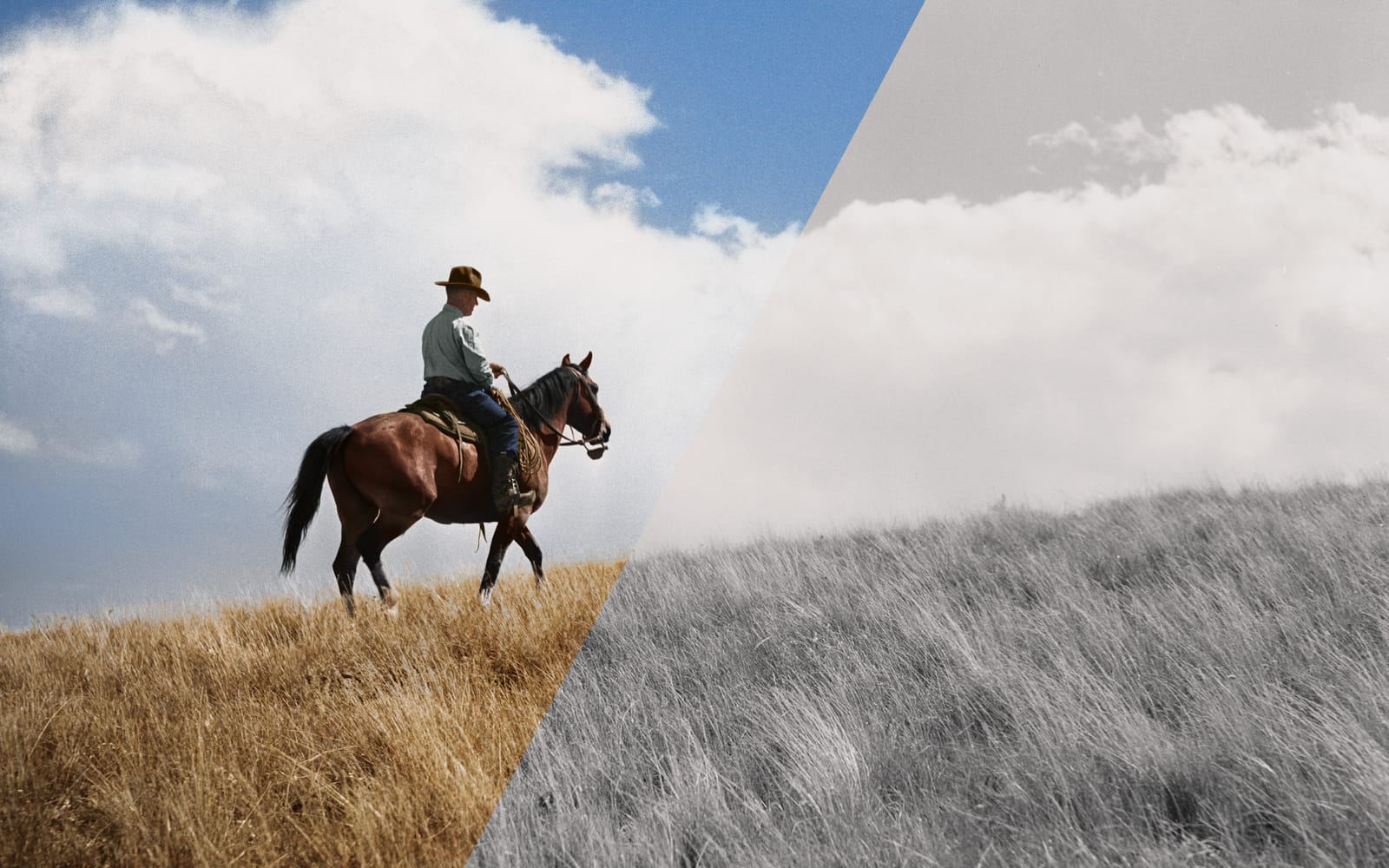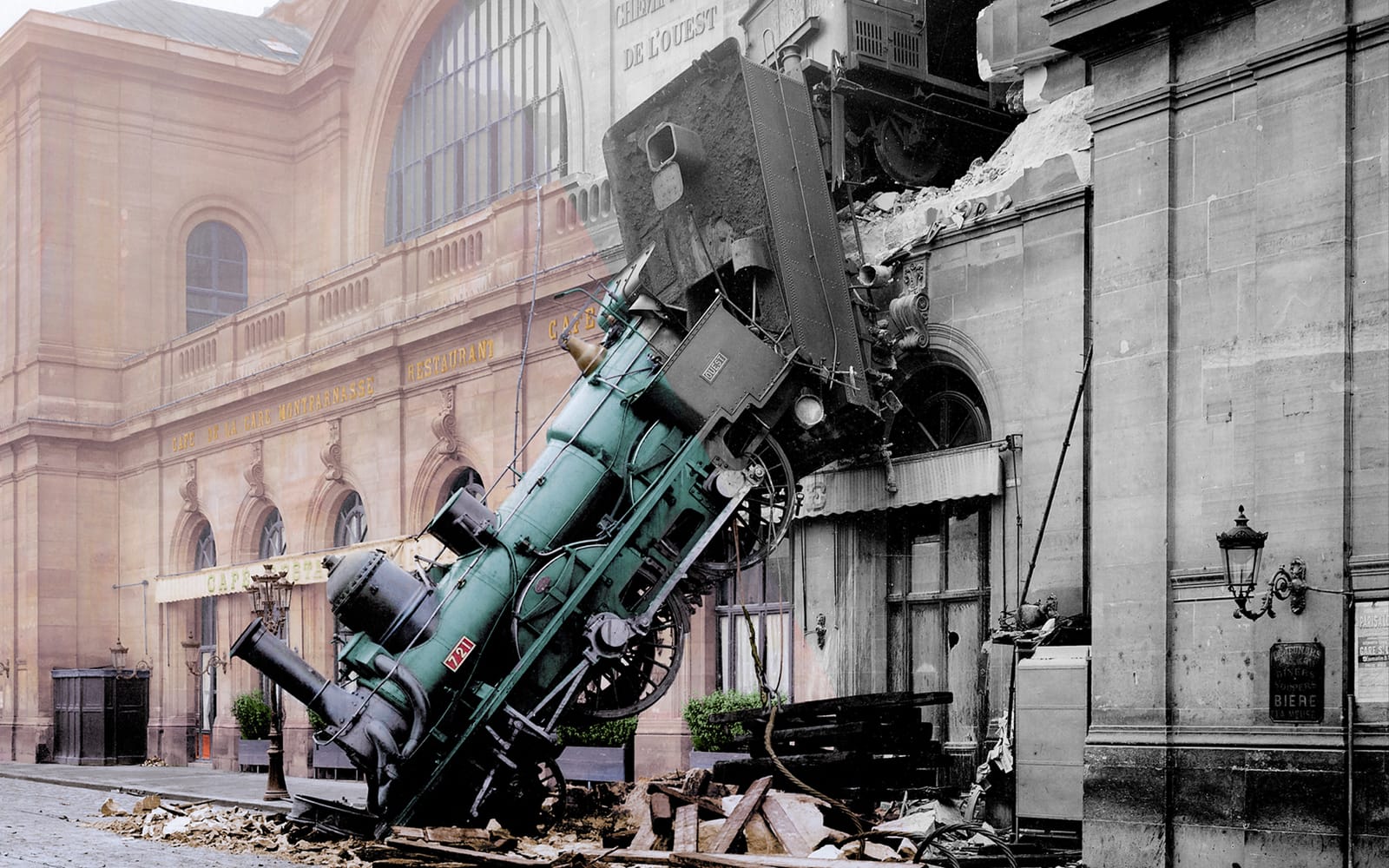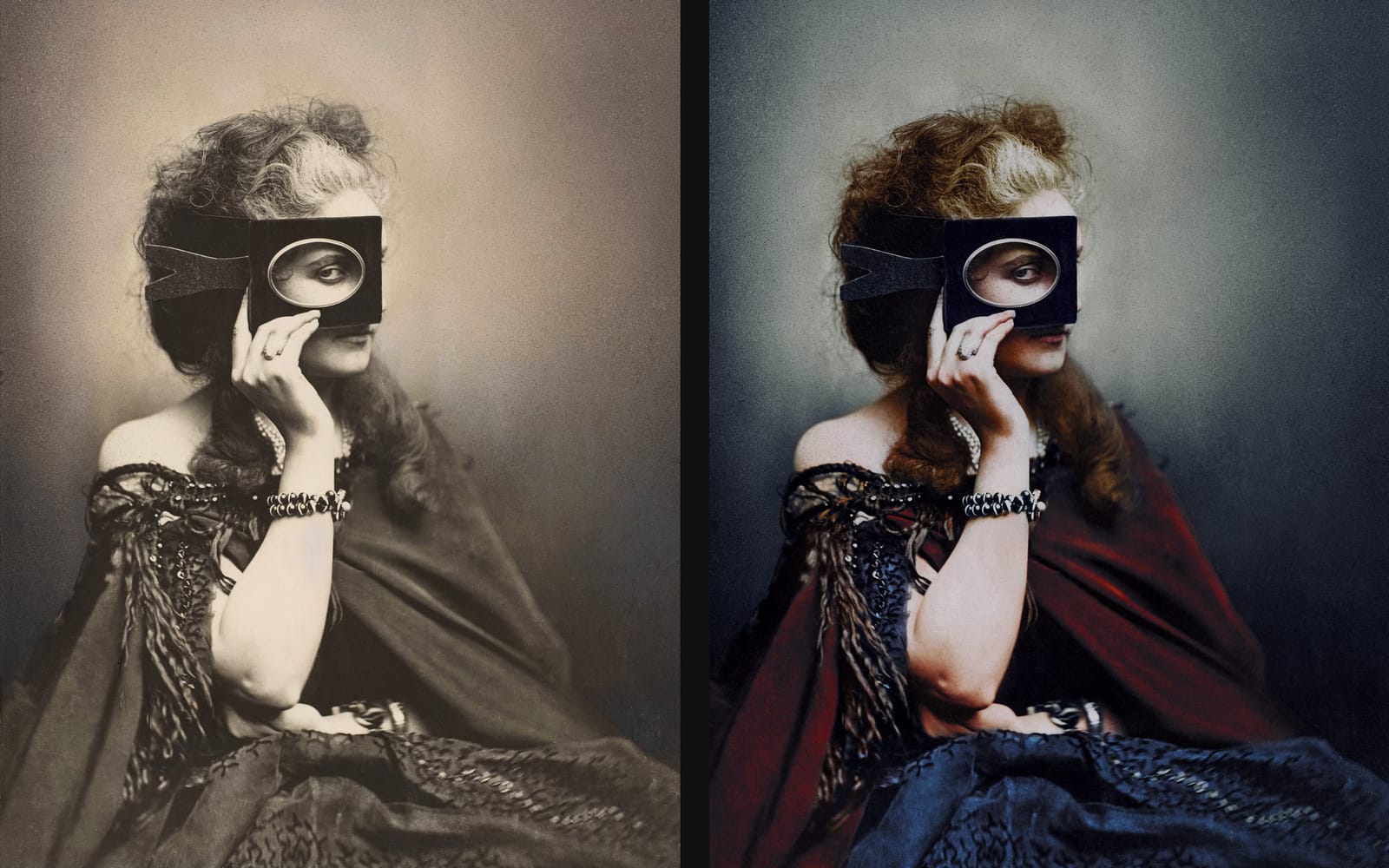1932: Mount Rushmore Under Construction
Doane Robinson, Gutzon Borglum and the Making of a Monument


The idea for national memorial at Mount Rushmore had its genesis almost exactly a century ago. In 1923 a South Dakota lawyer turned historian called Doane Robinson began to think that the state's grand scenery, especially in the Black Hills area, was the ideal setting for a stirring work of art. If something suitable could be planned, then, it could become a significant lure for visitors.
Robinson had one particular site in mind. This was near a prominence called Harney Peak (now officially Black Elk Peak), where a formidable series of granite pillars rose out of a mountain that the Lakota people had long known as Tunkasila Šakpe Paha, or Six Grandfathers Mountain.
Words by Peter Moore
Photographs Remastered and Colourised by Jordan Acosta

On 28 December 1923 Robinson wrote to a sculptor called Lorado Taft to share his idea. He told Taft that he was convinced that the pinnacles would lend themselves to some grand sculpture and, as a subject, he suggested Red Cloud ('Maȟpíya Lúta') the renowned Lakota leader, 'who lived and died in the shadow of these peaks'.
Taft was the natural person for Robinson to contact. Before the First World War, he had completed a solemn statue called The Eternal Indian which stood on the banks of the Rock River near Oregon in Illinois. In an ambitious age that was given to ideas that were sweeping, vast and majestic, Taft had already shown that he was capable of excelling.
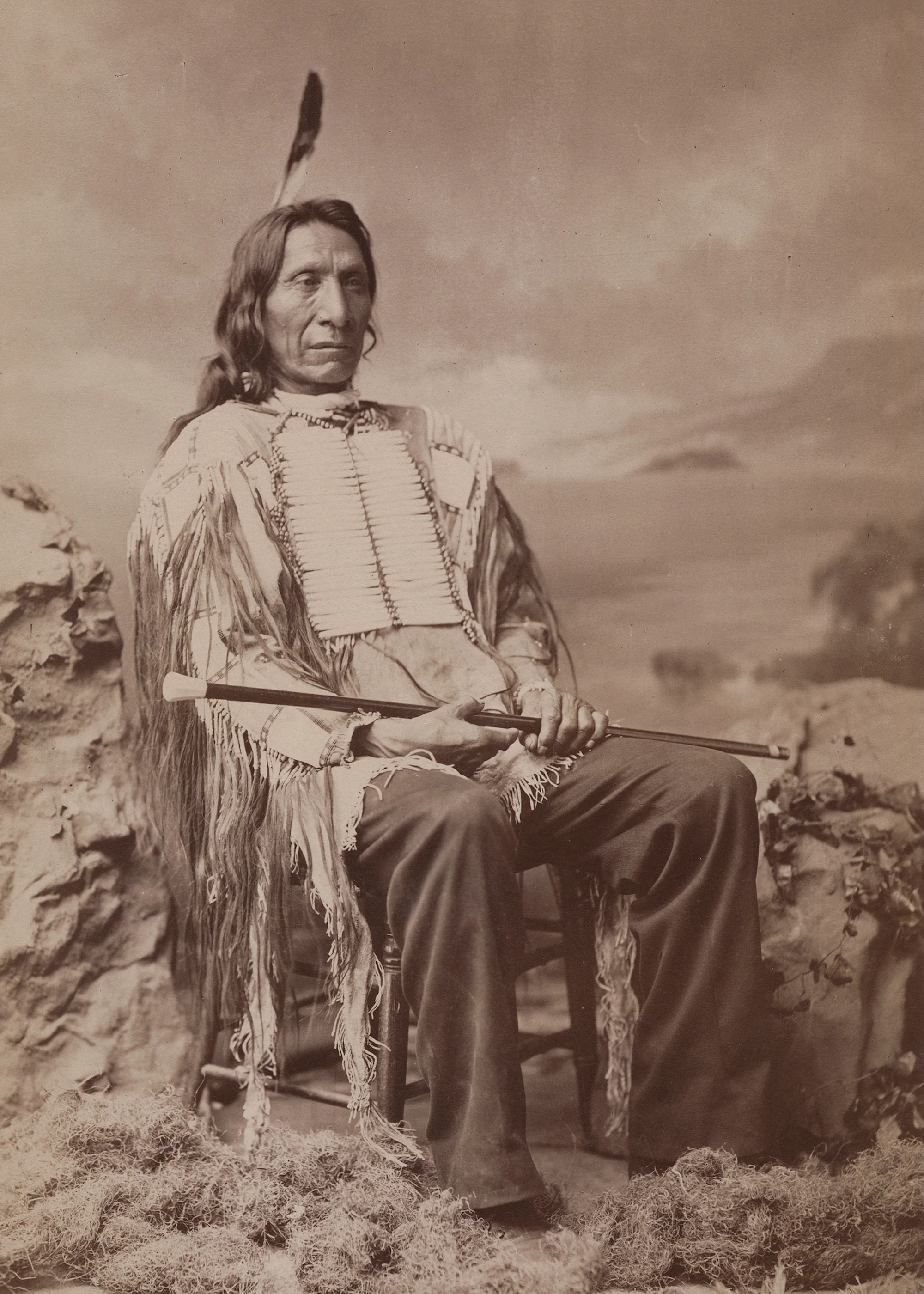
Taft was the natural person for Robinson to contact. Before the First World War, he had completed a solemn statue called The Eternal Indian which stood on the banks of the Rock River near Oregon in Illinois. In an ambitious age that was given to ideas that were sweeping, vast and majestic, Taft had already shown that he was capable of excelling.
Taft, however, rejected the approach. He was ill and the project was too daunting in its scope. Undeterred, Robinson cast his net once again. Having heard about an effort to carve the likenesses of Confederate leaders into a mountain range in Georgia, he approached the chief sculptor on this project. His name was Gutzon Borglum and his response was very different to Taft's.
Borglum replied to Robinson by telegram:
VERY MUCH INTERESTED IN YOUR PROPOSAL GREAT SCHEME YOU HAVE HOLD TO IT THE NORTH WILL WELCOME IT
Under Borglum’s direction the project moved ahead under a new plan to feature four of the great American presidents. On 1 October 1925 a dedication ceremony was held, which included a flag ceremony. Slowly, over the next fifteen years the faces of George Washington, Thomas Jefferson, Theodore Roosevelt and Abraham Lincoln materialised from the granite, each as much as 60 feet high.
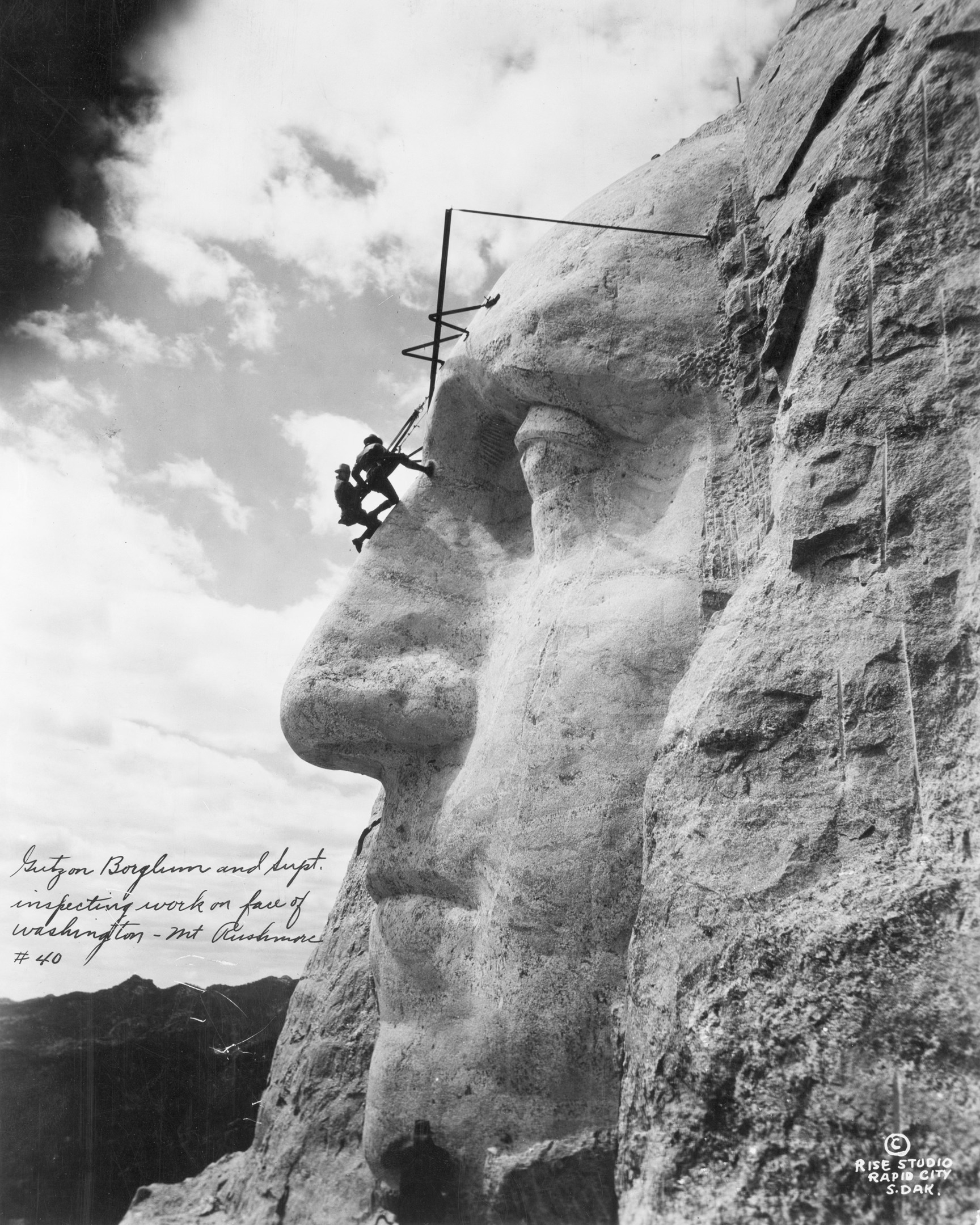
The photograph featured below was taken mid-way through the construction phase on 31 May 1932. Across the top of the original photograph is written an inscription. 'Gutzon Borglum and Supt. inspecting work on face of Washington. Mt Rushmore'.
The picture is therefore intriguing as it shows the creator (Borglum) in direct contact with his work of art. There is also something playful in the vision of him attempting to find his balance on George Washington's instantly recognisable face.
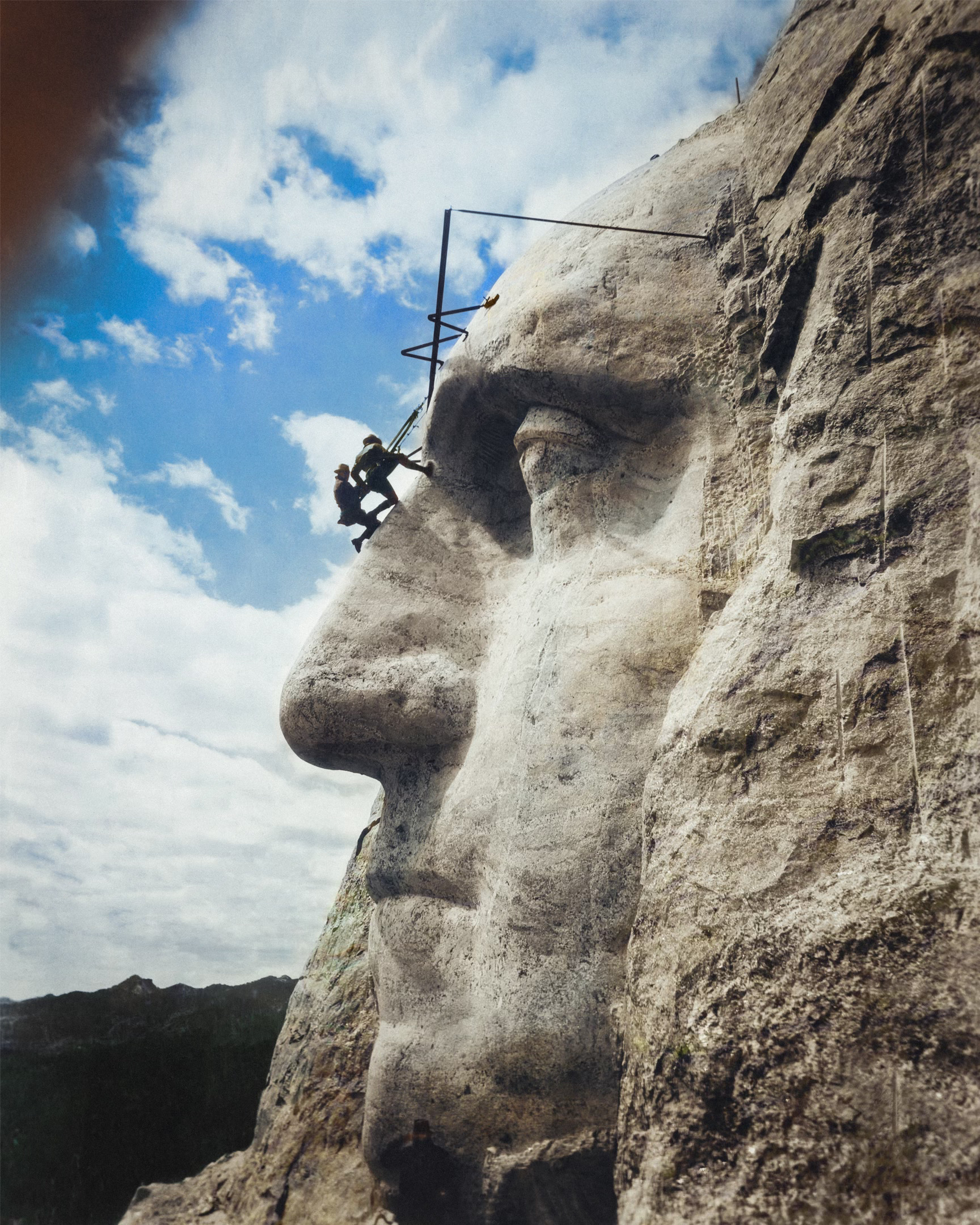
As with much American history, however, emotional complexities are also embedded in the composition. Robinson's choice of location at the Six Grandfathers had by this point already generated significant unease among the Lakota. They had long treated Tunkasila Šakpe Paha as a sacred space. By the 1930s a land dispute about the area had already reached a formal stage, with a suit for theft being lodged by several of the Lakota tribes against the US government.
Borglum, too, was a polarising figure. Rumours had followed him north to the Dakotas about his previous associations with the Ku Klux Klan. And for all of his undeniable brilliance as a sculptor, the true nature of his politics remained a source of suspicion.
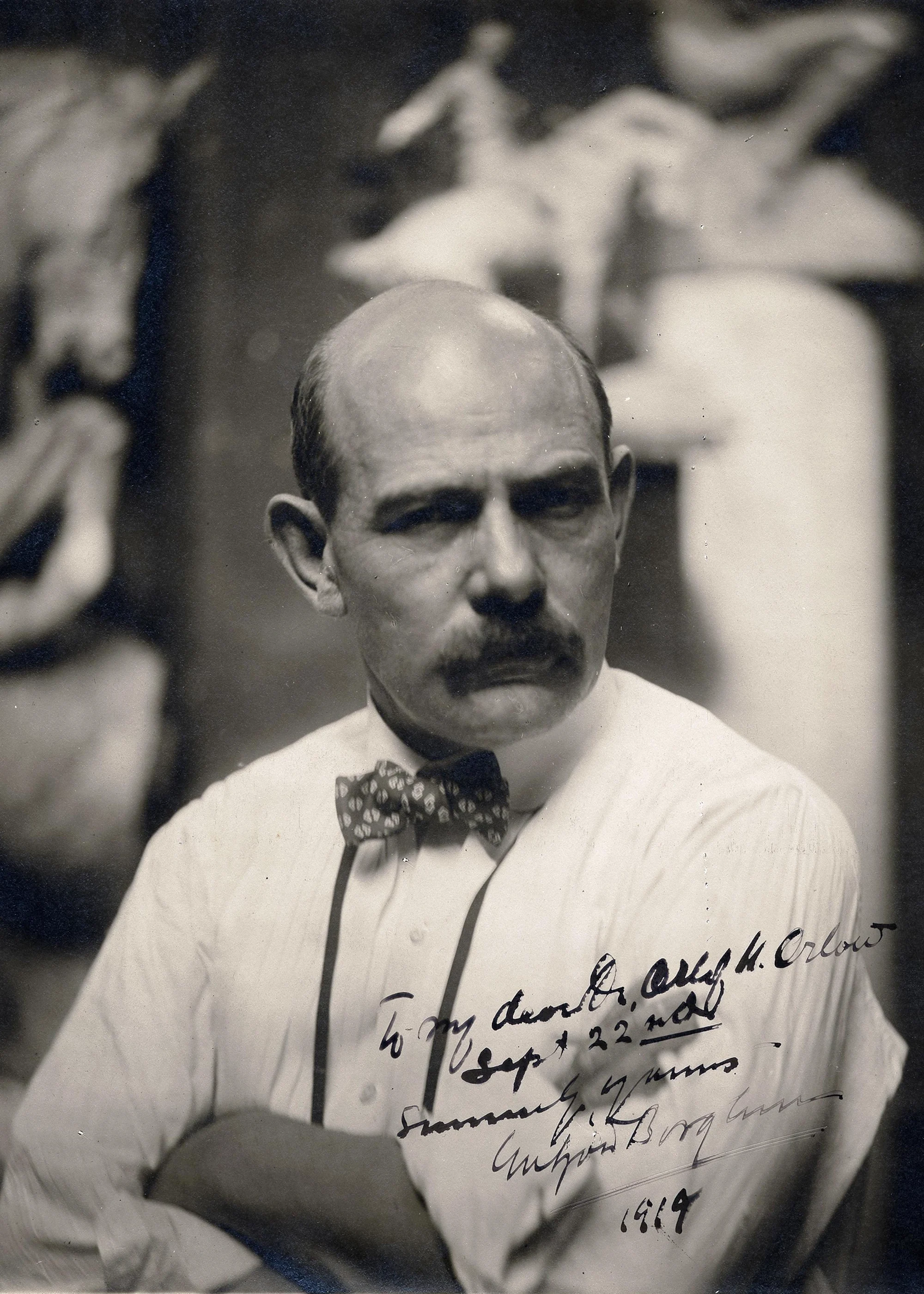
For sixteen years, however, after his appointment in 1925, Borglum battled to push the South Dakota project forward. There were many problems that he confronted: the small portion of carvable surface on the granite rocks; the capricious nature of Federal funding; the growing likelihood of war with Nazi Germany.
During these years Mount Rushmore acquired the name by which we know it today. By the time of Borglum's death in 1941 it was very nearly finished. Today the Mount Rushmore National Memorial is visited by about three million people every year •
This Snapshot was originally published September 29, 2023.

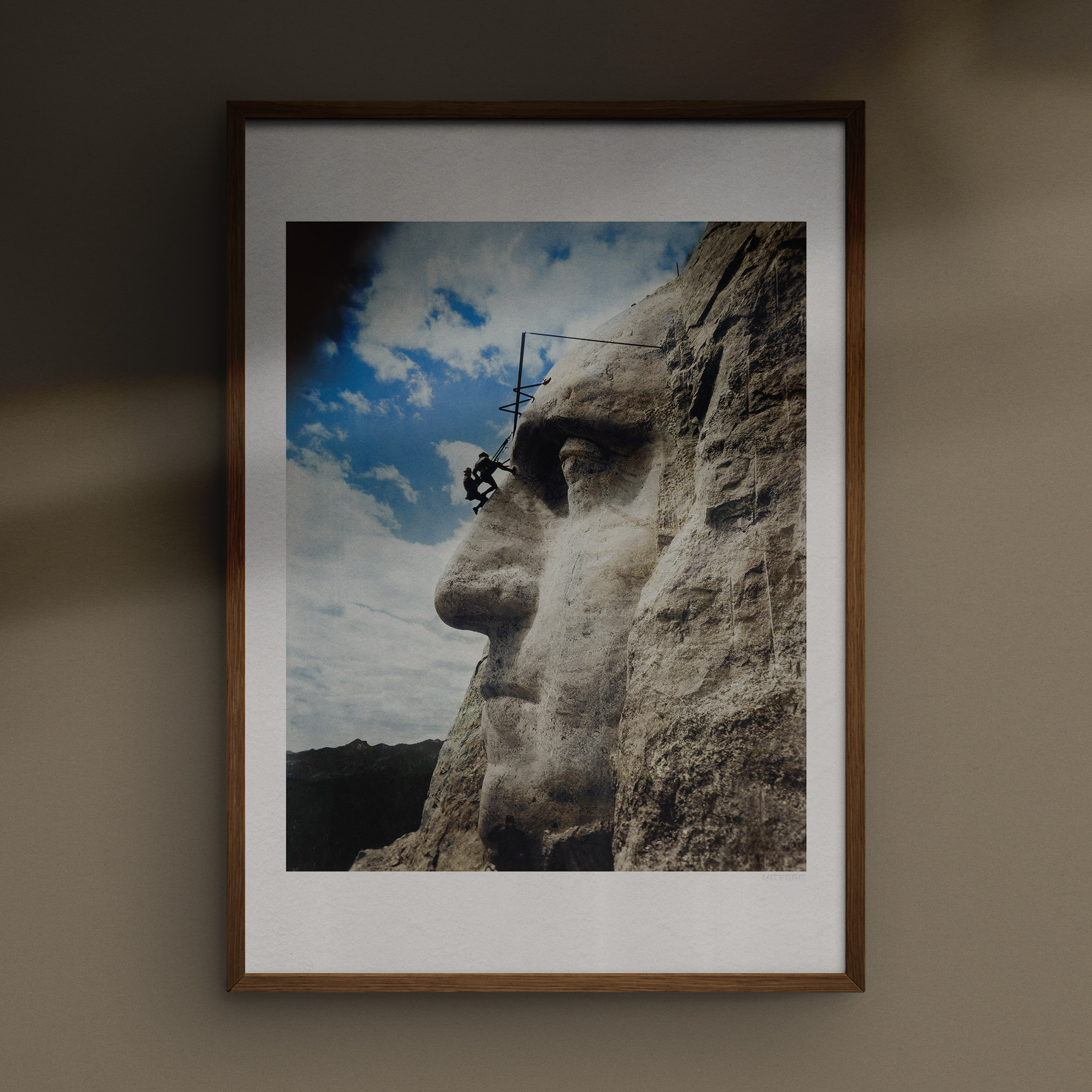
Ad: Unseen Histories relies on your patronage to operate. Our webstore offers a wide range of collectible museum-grade fine art prints, hand-printed in England for your wall space.
ColorGraph™ presents the most incredible colorized photography bringing the past to life. From start to finish, a ColorGraph print is made with exceptional care and attention. To mark its provenance, we emboss each one in the final stage of the hand-finishing process.

Further Reading
Timothy G. Anderson, Memorializing a Mountain Man: John G. Neihart, Doane Robinson, and Jedediah Smith(University of Nebraska, 2009)
Dylan Mancey, ⇲ 75 Surprising Facts about Mount Rushmore, Travel South Dakota
Diane Bernard, ⇲ The Creator of Mount Rushmore's Forgotten Links to White Supremacy, Washington Post
Amy McKeever, ⇲ The Heartbreaking, Controversial History of Mount Rushmore, National Geographic

📸 Dive into our Features
🎤 Read Interviews
🎧 Listen to Podcasts
🖼️ Buy fine art prints & more at our Store


